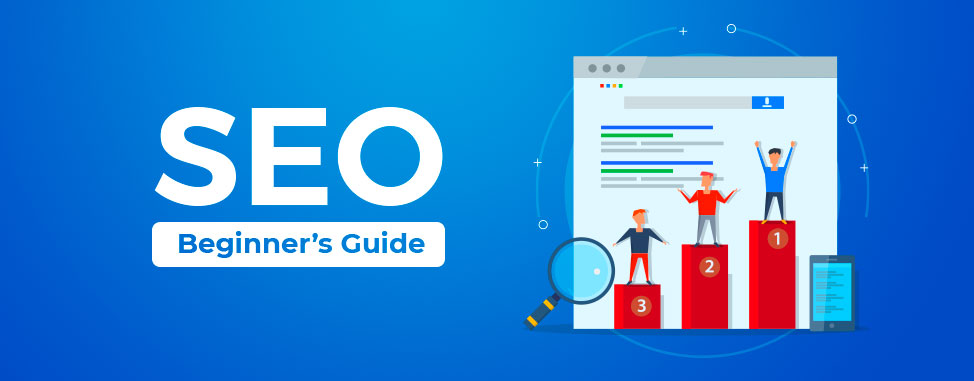
"What Is SEO? A Beginner's Guide"
As a website owner or digital marketer, you're likely aware of the importance of online presence. Search Engine Optimization (SEO) is a crucial component of this presence, helping your website rank higher in search engine results.
By understanding and implementing SEO basics, you can improve your website's visibility, drive more traffic to your site, and increase your online reach. This guide will walk you through the fundamentals of SEO, providing you with a step-by-step approach to learn SEO and enhance your online presence.
Key Takeaways:
1. Understand the importance of SEO for your online presence.
2. Learn the basics of SEO and how to implement them.
3. Discover how SEO can improve your website's visibility.
4. Find out how to drive more traffic to your site using SEO.
5. Gain insights into a step-by-step approach to learning SEO.
What Is SEO? A Beginner's Guide to Search Engine Optimization:
As you navigate the online world, understanding the basics of SEO can significantly enhance your website's performance. SEO, or Search Engine Optimization, is a critical aspect of digital marketing that helps search engines like Google understand and rank your website.

The Definition and Purpose of SEO:
SEO refers to the process of improving the quality and quantity of website traffic by increasing the visibility of a website or a web page to users of a web search engine. The primary purpose of SEO is to make your website more search engine-friendly, thereby improving its ranking on search engine results pages (SERPs).
Search engines use algorithms to rank websites based on relevance, authority, and user experience. By optimizing your website for these factors, you can improve your search engine rankings and drive more traffic to your site. Understanding how search engines work is crucial to developing an effective SEO strategy.
Why SEO Matters for Your Website:
SEO matters because it helps you reach your target audience more effectively. By optimizing your website for search engines, you can increase your online visibility, drive more qualified leads, and ultimately boost conversions. In today's digital landscape, having a solid SEO strategy is no longer a luxury, but a necessity.
Moreover, SEO is a cost-effective marketing strategy compared to paid advertising. By investing time and effort into SEO, you can achieve long-term results and improve your website's overall performance. Whether you're a small business owner or a digital marketer, understanding the basics of on-page SEO and off-page SEO can help you make informed decisions about your online marketing efforts.
The Three Pillars of Effective SEO:
A well-rounded SEO strategy is built on three foundational pillars: On-Page SEO, Off-Page SEO, and Technical SEO. Mastering these elements is crucial for improving your website's visibility and driving more traffic to your site.
On-Page SEO: Optimizing Your Content:
On-Page SEO involves optimizing individual web pages to rank higher in search engines. This includes crafting compelling page titles and meta descriptions that accurately reflect your content and entice users to click through.
To optimize your content, focus on incorporating relevant keywords naturally, using header tags (H1, H2, H3) to structure your content, and ensuring that your content is high-quality, engaging, and provides value to your readers. Local SEO is also a critical aspect of On-Page SEO, especially for businesses serving specific geographic areas.
Off-Page SEO: Building Authority:
Off-Page SEO refers to actions taken outside of your website to impact your rankings. The most significant factor here is building high-quality backlinks from authoritative sites. This can be achieved through creating shareable content, engaging in guest blogging, and leveraging relationships with other reputable websites.
By securing backlinks from relevant sources, you not only improve your site's authority but also increase its visibility in search engine results. SEO services often include link building as a key component of their offerings.
Technical SEO: Improving Website Performance:
Technical SEO focuses on improving the technical aspects of your website to enhance its visibility and crawlability by search engines. This includes optimizing your site's loading speed, ensuring mobile responsiveness, and implementing SSL encryption for security.
A well-optimized website provides a better user experience and is favored by search engines. Regularly auditing your site's technical performance and making necessary adjustments is crucial for maintaining and improving your search engine rankings. Technical SEO is an ongoing process that requires attention to detail and a commitment to staying up-to-date with the latest best practices.
5 Steps to Implement Basic SEO Today:
Basic SEO is within reach with these simple and actionable steps. By following these steps, you can improve your website's online visibility and drive more traffic to your site. White hat SEO practices, such as creating quality content and optimizing your on-page elements, are essential for achieving long-term success in search engine rankings.
Conducting Simple Keyword Research:
Keyword research is a crucial step in any SEO strategy. It involves identifying the terms and phrases your target audience uses to search for content like yours. To conduct simple keyword research, start by brainstorming a list of relevant keywords, then use online tools to analyze their search volume and competition.
You can use free tools like Google Keyword Planner to find the best keywords for your content. Focus on long-tail keywords that have lower competition and higher conversion rates.
Optimizing Your Page Titles and Meta Descriptions:
Optimizing your page titles and meta descriptions is vital for improving your website's click-through rate from search engine results pages (SERPs). Your page title should be descriptive, include your target keyword, and be no more than 60 characters.
Meta descriptions should be compelling, include your target keyword, and be no more than 160 characters. They should entice users to click through to your website.
Creating Quality Content That Ranks:
Creating quality content that ranks higher in search engines requires a strategic approach. Focus on creating well-researched, engaging, and informative content that provides value to your audience.
Use your target keywords strategically throughout your content, but avoid keyword stuffing. Ensure your content is comprehensive, and use subheadings to improve readability.
Improving Your Website's User Experience:
Improving your website's user experience is critical for reducing bounce rates and increasing engagement. Ensure your website is mobile-friendly, has a clear navigation menu, and loads quickly.
Use internal linking to help users find related content on your website. This can also help search engines understand your website's structure and content.
Using Free SEO Tools to Track Progress:
Using free SEO tools can help you track your progress and identify areas for improvement. Tools like Google Analytics and Google Search Console provide valuable insights into your website's traffic, engagement, and search engine rankings.
Regularly reviewing your website's performance using these tools can help you refine your SEO strategy and achieve better results over time.
Growing Your SEO Skills: Where to Go From Here:
As you continue your SEO journey, it's essential to stay updated with the latest trends and best practices. Consider investing in seo training or seo coaching to enhance your skills and stay ahead of the competition.
If you're running an ecommerce business, learning about seo for ecommerce can significantly boost your online sales. Similarly, if you're using WordPress, understanding seo for wordpress can help you optimize your website more effectively.
The potential for seo income potential is vast, and with the rise of voice search optimization, there's a growing demand for SEO experts who can adapt to emerging trends.
As we move into 2025, staying informed about seo ranking trends2025 will be crucial. You can also explore resources on seo for chatgpt era to understand how AI is impacting search engine optimization.
By continuing to grow your SEO skills and staying updated with the latest developments, you can unlock new opportunities and achieve success in the ever-evolving digital landscape.
Er. Rushikesh Kekane
Founder & CEO
"DATA-SOFTWARE ANALYSIS"








